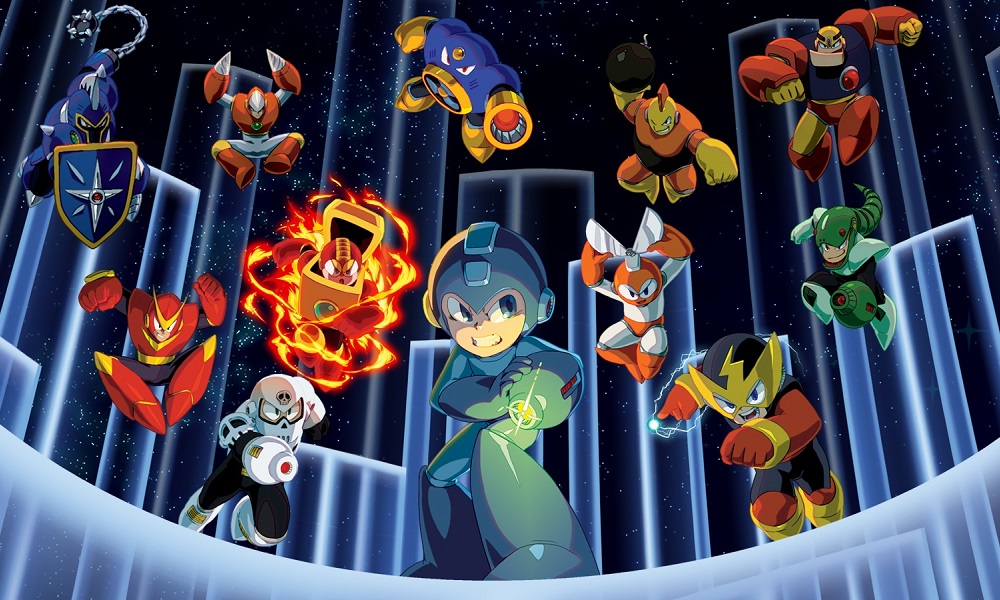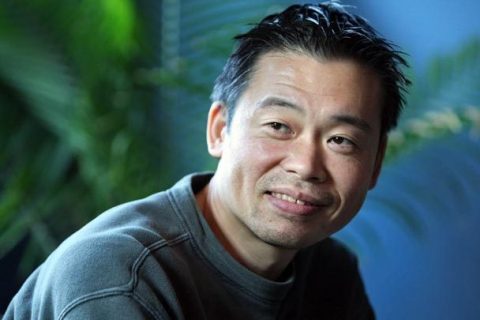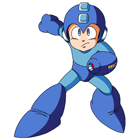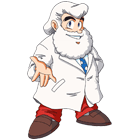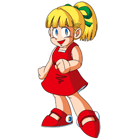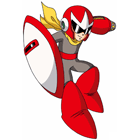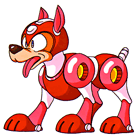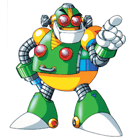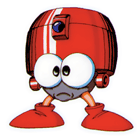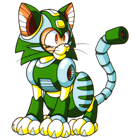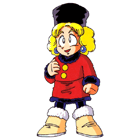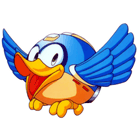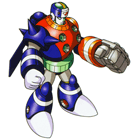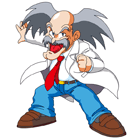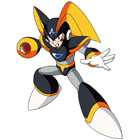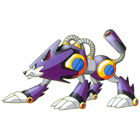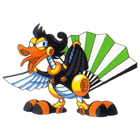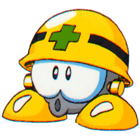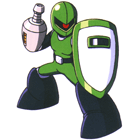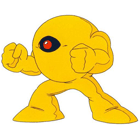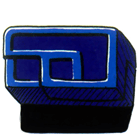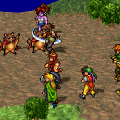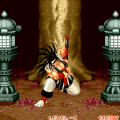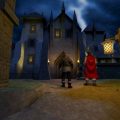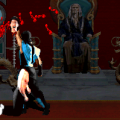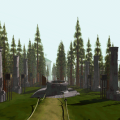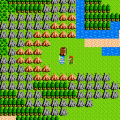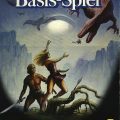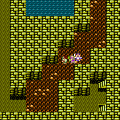- Mega Man (Series Introduction)
- Mega Man
- Mega Man 2
- Mega Man 3
- Mega Man 4
- Mega Man 5
- Mega Man 6
- Mega Man 7
- Mega Man 8
- Mega Man & Bass
- Mega Man 9
- Mega Man 10
- Mega Man 11
- Mega Man: Dr. Wily’s Revenge
- Mega Man II (Game Boy)
- Mega Man III (Game Boy)
- Mega Man IV (Game Boy)
- Mega Man V (Game Boy)
- Mega Man: The Wily Wars
- Mega Man (Game Gear)
- Rockman Complete Works
- Mega Man Anniversary Collection
- Mega Man 3 (DOS)
- Mega Man (DOS)
- Mega Man: Powered Up
- Super Adventure Rockman
- Wily & Right no RockBoard: That’s Paradise
- Mega Man Soccer
- Mega Man: The Power Battle
- Mega Man 2: The Power Fighters
- Rockman: Battle & Fighters
- Mega Man Battle & Chase
- Street Fighter x Mega Man
- Mega Man Tiger LCD Games
- Rockman & Forte (WonderSwan)
- Rockman’s IQ Challenge/Rockman Gold Empire/Rockman Strategy
- Mega Man Mobile Games / Panic Shot! Rockman
- Mega Man Unreleased Games
Since the release of Vulgus in 1984, Capcom had steadily built its legacy as a major publisher and developer in the arcades. Many of their titles, like 1942, Commando and Ghosts’n Goblins would later see ports on home computers and consoles like the Famicom/NES, which became a powerhouse in homes across Japan and the world. However, what the company lacked was a game for the popular system divorced from the arcade scene, one that felt more suited for home play, like the mega hit platformer Super Mario Bros.. Such a new kind of title needed fresh talent. So Capcom put together a team of new recruits into Capcom’s workforce, with a few of them arriving straight out of college. It was a risky gamble, but it paid off, and cumulated in a franchise that would last more than 25 years spawn multiple series of games.
The team consisted of merely seven members. Keiji “Inafking” Inafune joined Capcom in 1987 as an illustrator, with his first work creating portrait shots and adapting them for sprites in the original Street Fighter arcade game based of Bengus’ character designs. Together with Naoya “Tom Pon” Tomita and Yasuaki “Yasukichi” Kishimoto, they laid out the design work and created the art assets under the planning supervision of Akira “A.K.” Kitamura. The game’s engine that would lay the groundwork for the series was heralded by Nobuyuki “H.M.D.” Matsushima. Music was composed by Manami “Chanchacorin Manami” Matsumae and programmed in by Street Fighter (1) composer and all-around sound tech guru Yoshihiro “Yuukichan’s Papa” Sakaguchi.
Even though he wasn’t the initial driving force behind the project, much of the series’ accomplishments and dedication owe to Inafune, who came to serve as an overseer for the franchise for decades. On the first game he was a character designer, and Inafune himself is quick to point out that his design for Mega Man is a refinement of Kitamura’s orginal model and deems himself co-creator in that respect, even though he himself gave the character the iconic look and the 8-bit sprite. His influences for the design came from both sides of the Pacific. Aside from the obvious parallels to Astro Boy (though with a lot less darker overtones than the Osamu Tezuka classic), Inafune borrowed from anime and manga he read growing up, mostly early Tatsunoko Productions’ works like Casshern and Time Bokan. Inafune also drew from American superhero comics like Superman and Wolverine, giving many of the robots the de facto Underoos over the tights costume design, complete with boots and gloves as accents. The reason the Blue Bomber became blue in the first place was due to the NES’ limited palette having more shades of that hue compared to any other, therefore making the character stand out from the background, at least in his default color scheme.
The name for the game went through many changes, ranging from “Mighty Kid” to “Rainbow Man” (because of the character’s shifting hue from powers). Ultimately, the Japanese title was settled on Rockman, both to signify the music motifs within the game and its characters, but also the Rock-Paper Scissors aspect of the gameplay. Even though a countless amount of games were made under this monicker, one of the most well-known traits of the Mega Man franchise is the open-ended choice of choosing the order of the levels. It was a radical idea during its era of development – rather than to frustrate players with one difficult obstacle, it enabled them to choose another stage to tackle, which they might be more capable of finishing. Completing a stage also grants the player a power, which can greatly assist in beating the stages that were problematic before. This is another one of the most well-recognized tropes of the series: earning bosses’ weapons. These weapons not only give Mega Man new tools to take down foes, but each boss has a particular weakness to one of them. This gave the game a fresh (for the time) gimmick and helped lengthen its replay value, allowing players to make their routes as easy or as hard as they please. Even as this gimmick was replicated and reused over and over and even shifted away from in spin-offs and some later games, the lovable blue robot became a mainstay as one of the most memorable video game mascots for over 25 years.
Heroes
DLN-001 Mega Man / Rock Man / Rock
Created as the first fully working intelligent humanoid robot, his model became the template for the rest of the Robot Master designs and serves as Dr. Light’s assistant and all-around adaptable tool user. When Dr. Wily started terrorizing the populace, Rock willingly allowed himself to be altered into a battlebot for justice – the super fighting robot Mega Man. His mimicry and versatility would prove useful, as he is able to gain and use the powers of the Robot Masters he defeats. His only limits and weaknesses are his strict following of Asimov’s Law of Robotics, his heroic naïveté, and his utter inability of shooting directly upward. And spikes.
Dr. Thomas Light / Right
Santa Claus in a lab coat and without the hat. He holds a PhD in robotics, was a winner of the Nobel Prize for physics, and is generally an all around nice guy. He built Mega Man, Proto Man, Roll, Rush, and many other robots for the industrial complex, seeking harmony with his creations and their kind with humans. As Mega Man X and its series would show, he sealed X away hoping that his last robot would have complete free will yet still seek to do good in the world in the future. Plus he loves to cosplay as Ryu from Street Fighter in his spare time.
DLN-002 Roll
A housekeeper robot who acts like a little sister to Mega Man, serving as a parallel to Astro Boy’s Uran. She rarely fights (mostly in spin-offs) but provides support throughout the series, such as manning the in-game shops. For a brief time she had a slightly altered look and dress in Mega Man 8. She appears on the final credits screen in the first game but isn’t mentioned by name until the third, where she and Mega Man complete the “rock’n’roll” pun together. Her role was minor if not almost absent throughout the NES era, before she began showing up in cutscenes more often in every game past Mega Man 7.
DLN-000 Proto Man / Blues
The prototype sentient robot created by Dr. Light. Rebels against his creator after finding out his energy core was unstable and takes off on his own. He was found by Dr. Wily when the mad scientist was in exile and had his core repaired along with other modifications to make him a combat robot. An independent soul, his cool helmet and scarf conceal his true identity from Dr. Light, whom he still distrusts. Proto Man shows up to help Mega Man out from time to time, or challenges him to test his strength, but tends not to meddle when he can, so he’s sort of like Racer X to Speed Racer. His first reveal in the series occurred in Mega Man 3.
Rush
Loosely based on Casshern’s canine companion Friender, this dog bot is able to transform into various tools to assist Mega Man. His usual forms are a jet board to ride on and a springboard to reach high places, but he can also traverse underwater and in space, and lots more. Later on Rush serves as adapter suits for the Blue Bomber. The robo pooch debuted in Mega Man 3.
Auto / Rightot
A goofy hulking green bot built by Dr. Light to lend a hand around the lab. He hangs around as comic relief and mostly does shop duty since he first appeared in Mega Man 7. Along with the occasional wacky comment, he generally ends his sentences with a “-dasu” suffix in the Japanese versions. His design is based on the classic blinking, walking beep-boop robot toys of yesteryear.
Eddie / Flip-Top
A walking item transporter that first showed up in Mega Man 4. He appears in stages to deliver the player a helpful item from his container body: possibly 1-ups or E-Tanks, but mostly health or weapon energy.
Tango
A feline support robot that appeared in the Game Boy Mega Man V and a scant few other titles. Unlike its canine brethren, its only ability is to roll and bounce around on the ground like a buzzsaw dicing up enemies. Clearly not as helpful since this attack has a long start-up delay and can barely be directed towards threats.
Dr. Mikhail Sergeyevich Cossack
A Russian robotic engineer who created the Robot Masters in Mega Man 4. He’s not really bad, but was forced to try and take down our hero in order to get back his kidnapped daughter. He’s rarely seen or mentioned after his debut game, outside of comics and manga.
Kalinka Cossack
Dr. Cossack’s daughter, named after a classic Russian folk song. She serves as a playable character in RockBoard and a kidnapping victim in Mega Man 4, and little else besides cameos. She does have the distinction of being one of the scarce few female characters in the classic series.
Beat
A little blue bird built by Dr. Cossack to aid Mega Man once he finds all of its parts in Mega Man 5. Its main uses are diving into enemies Mega Man can’t reach, saving him from pits, and rarely shielding his allies from attacks. Oddly enough it gets plenty of screentime in Super Adventure Rockman, even though it rarely actually assists the Blue Bomber.
Duo
A robot of justice from outer space out to purge evil from the cosmos. First appearing in The Power Fighters to hype Mega Man 8, Duo crash-lands onto Earth along with an unnamed evil space robot after a fierce battle left them incapacitated. He is huge and slow but throws a powerful fist, able to cause shockwaves or hand-shaped projectiles with his punches. His original intended creator was to be Dr. Cossack, hence his more outwardly Siberian design.
Villians
Dr. Albert W. Wily
Einstein-looking comically mad scientist with a skull motif and main antagonist in the original series. Former colleague and bitter rival to Dr. Light, he was always 2nd best, so he strides to prove himself via taking over the world with his evil robots. Of course his schemes are always thwarted. Insane as he is, he seems quite cunning into manipulating others into his doing, or at least playing off others’ naïveté time and again. It’s probably how he gets his funding for his army of bots or his giant skull fortresses. His dirty work leaves an impact throughout the future sequel spin-offs, particularly in the Mega Man X series.
SWN-001 Bass / Forte
Wily’s own take on Mega Man, emerging on the scene at the start of Mega Man 7. If Proto Man is Knuckles to Mega Man’s Sonic, then Bass is Shadow the Hedgehog. Bass is a tough and arrogant anti-hero, who tends to butt heads with his master, wanting to fight Mega Man on his own terms. At best he’s a sort of evil mega clone, serving as a mid boss in the later games’ fortresses. There are many games where Bass is playable alone or even alongside Mega Man, able to take down his creator as a sign of his own pride. His original name from Inafune’s sketches was Baroque.
Treble / Gospel
Bass’ own Rush-like companion, though not as versatile a handy-dog. It is a lot more offense-based than Mega Man’s pup and can fuse with Bass to super-boost him with the power of flight. In fact, Treble is rarely used for anything else other than to combine with his master, which was only made possible by stealing plans from Dr. Light. His name was changed stateside to curtail any possible religious connotations. Perhaps they should have stuck to the beta name Crush instead.
Reggae
A seldom-seen support robot Wily built based off an Oriental Stork. An annoying and mocking birdbot that constantly repeats its master’s quotes or laughs at his screw-ups. First appeared in RockBoard.
Met / Metal
The mascot baddie of Mega Man that’s been a foe since the very first game and has shown up in every title and almost every subsequent series (aside from Legends) with multiple variations like scuba gear or rocket packs. They are impervious to almost all weapon shots when hiding in their construction hard hats, and kind of cute in an infuriating sort of way.
Sniper Joe
Mass-produced humanoid robots created by Dr. Light and made into armed soldiers by Dr. Wily. Canonically based on Proto Man’s design, they serve as formidable opponents since the first game, able to block Mega Man’s buster shots with their shield before firing back. It didn’t take long for specialized Joes to crop up with newer weapons and manning many vehicles. Similar enemies appeared in the Mega Man X and Zero/ZX series.
Devil
A recurring boss that almost always appears in Wily’s fortresses. This blob-like beast breaks up into fast-moving pieces of itself that Mega Man must dodge, until it reforms its body on the other side of the screen. Started as a yellow monster but takes on other colors and shapes as the series went on. Its only weak spot is its eye or core, depending on the game.
Appearing / Disappearing / Buzzing Blocks
A staple obstacle in Mega Man’s path. These platforms pop in and out of existence in a set interval, mostly above spikes, bottomless pits, or other instant death areas. Often the next block would appear right above Mega Man’s head in certain situations, much to the player’s frustration. Thankfully they can be bypassed using Rush or other items in many of the games.
